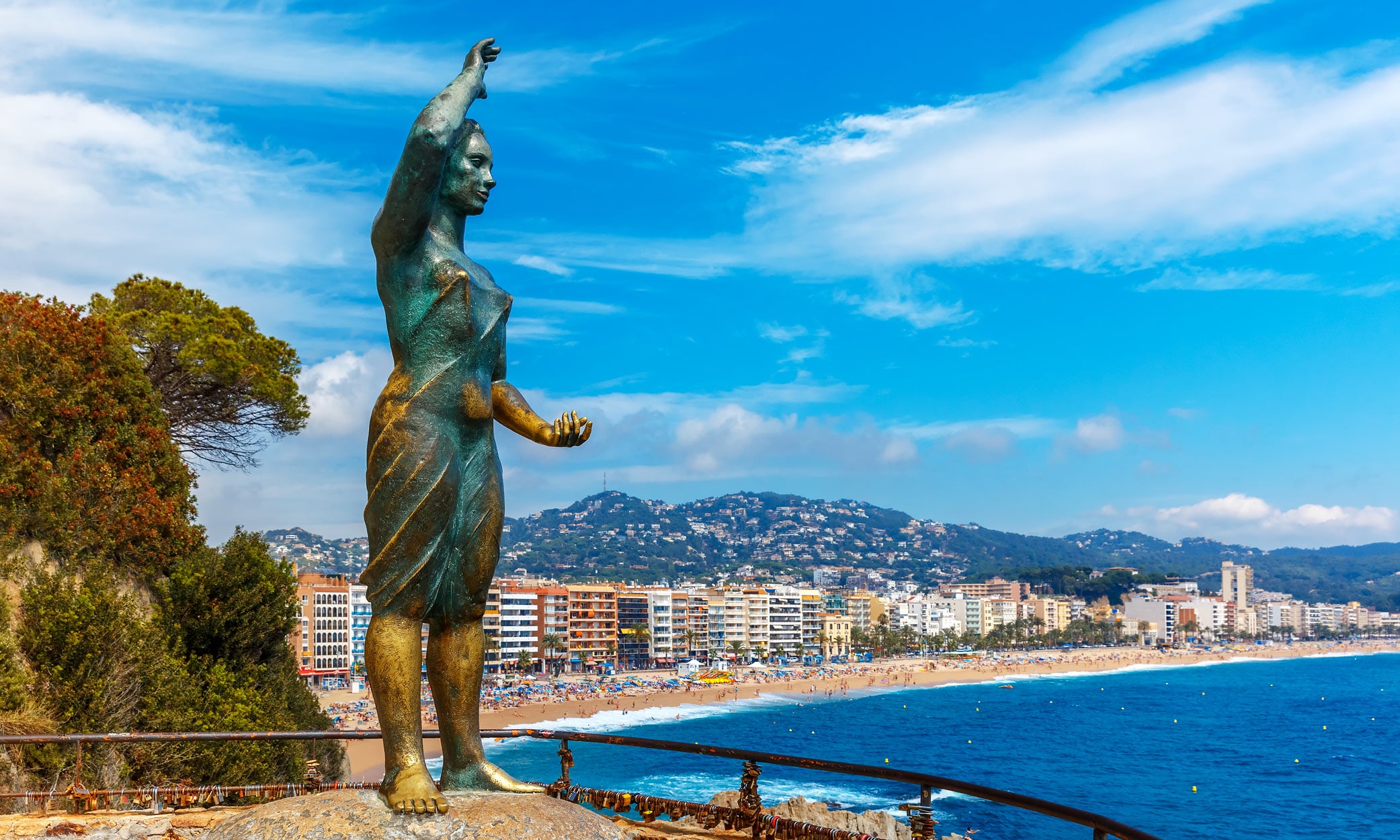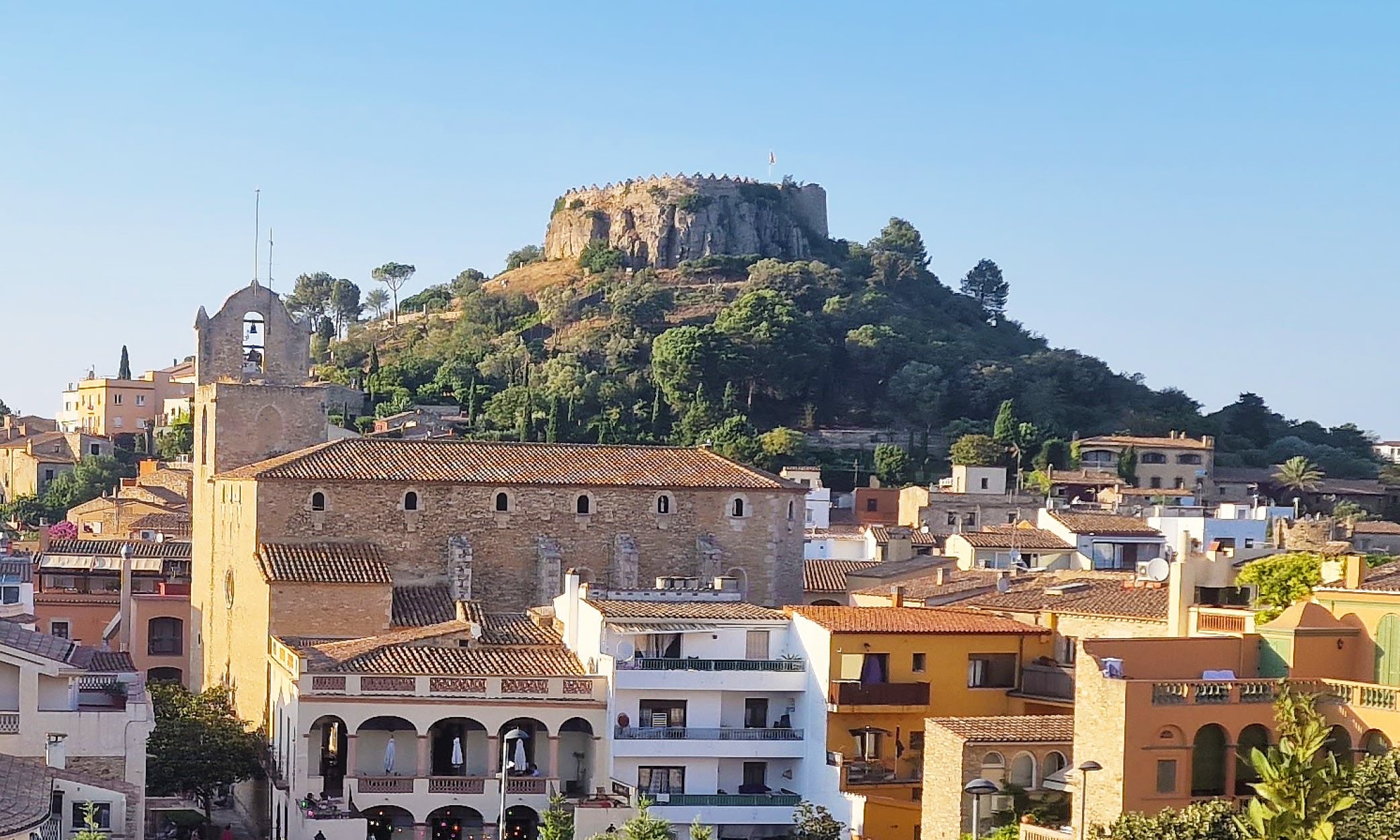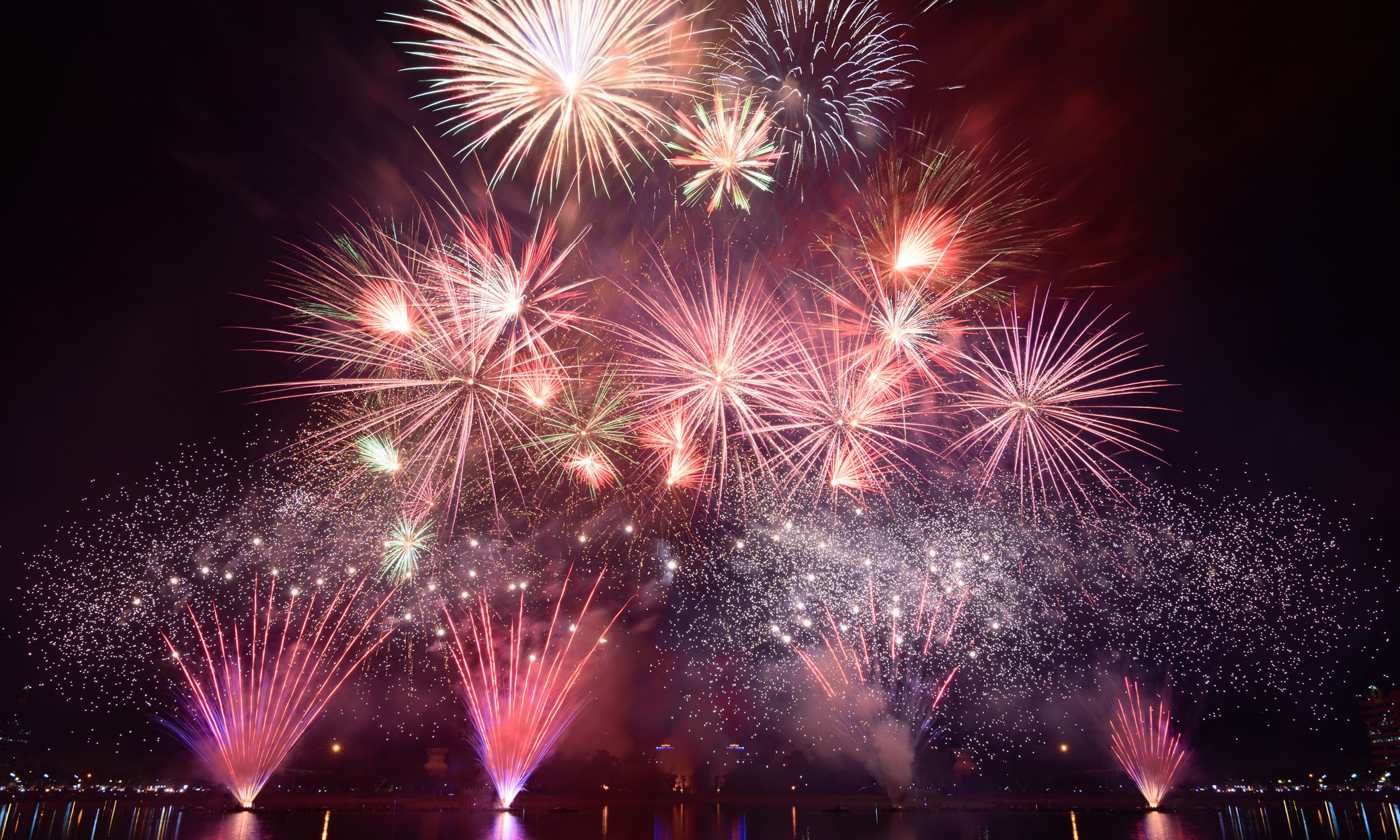
The Feast Day of Sant Joan on 24 June is a Public Holiday in Catalunya and neighbouring Valencia and marks the beginning of the tourist season proper on La Costa Brava. Before there were ever tourists here though it was already an important date on the calendar. Long before in fact!
Midsummer
Originally, way back in pagan times, this feast marked the summer solstice and was a “Midsummer” festival. Later, the Christian church, as they did with many other originally pagan festivals, such as Christmas, and All Souls’ Day, for example, co-opted the summer solstice into their calendar as the feast day of Sant Joan. And by the way, in case you’re not familiar yet with Catalan names, Joan isn’t a girl, he’s a guy. “Sant Joan” is “Saint John” in English, in this case, St. John the Baptist.
As they did with Christmas, when they shifted the date slightly from the actual winter solstice on the 21st of December to the 25th, so they did with Sant Joan from the 21st of June to the 24th. Since the gospels tell us that John the Baptist was born six months before Jesus, and Jesus’ birthday had been given as 25 December, so John’s was given as 24 June.
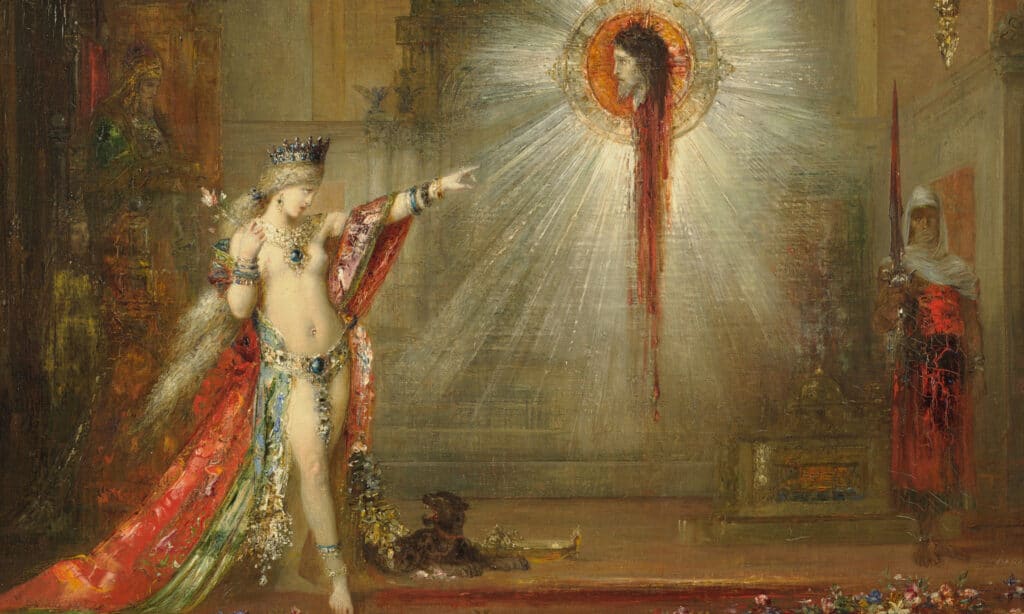
Happy Birthday, Joan!
John the Baptist is unusual among Christian saints as his feast day is on his birthday rather than on the supposed date of his martyrdom at the hands of King Herod at the behest of Salome, the little minx! In case you don’t know the story, here’s a summary.
King Herod of Galilee had married Herodias, the divorced wife of his brother, who had a daughter called Salome from that first marriage. John the Baptist had publicly denounced the new marriage as it was forbidden by Jewish law to marry the divorced wife of your brother. According to the story, Salome was about 15 years of age and very beautiful. Encouraged by her mother, she performed the “Dance of the Seven Veils” for King Herod, her stepfather. When he asked her what she wanted as a reward, she demanded the head of John the Baptist on a silver platter, which she then gave to her mother. And that was the end of John the Baptist!
In the Christian religion, John the Baptist’s role as a prophet was to prepare the way for Jesus. It is believed that the Christian church’s choice of the solstices as the birth dates for both John the Baptist and Jesus Christ may have something to do with a supposed quote by John that said, “I must decrease, He must increase”. Thus, if John was born on the summer solstic,e the length of the days would decrease after his birth, while they would increase following the birth of Jesus on the winter solstice.
Still pagan after all these years?
So, the Festa de Sant Joan may have been “taken over” by the Christian church, but many pagan elements of the original celebration linger on to this very day. It could even be argued that today’s festivities have lost their religious meaning for most people and are probably closer to a good old pagan shindig once again!
The main elements, or symbols, of the Festa de Sant Joan are fire, water and herbs. Herbs have always been used for remedies, and it was believed that on the feast of Sant Joan, their healing properties were enhanced a hundred times over, so herbs were traditionally picked on St. John’s night.
For the real purists, it was also believed that bouquets made with four specific plants – walnut leaves, immortelle, stonecrop, and the aptly named St. John’s wort – would bring good luck, good health, and good fortune to their bearer. In times past, small bouquets made with those herbs used to be offered to loved ones to be kept throughout the year, but that tradition has largely lapsed nowadays.
Water represents healing, and so on the night of the 23rd, it was traditional to bathe in the sea. If you happen to be near a beach, you may see many people jumping into the sea, although possibly for its sobering-up effect rather than any healing properties in this day and age!
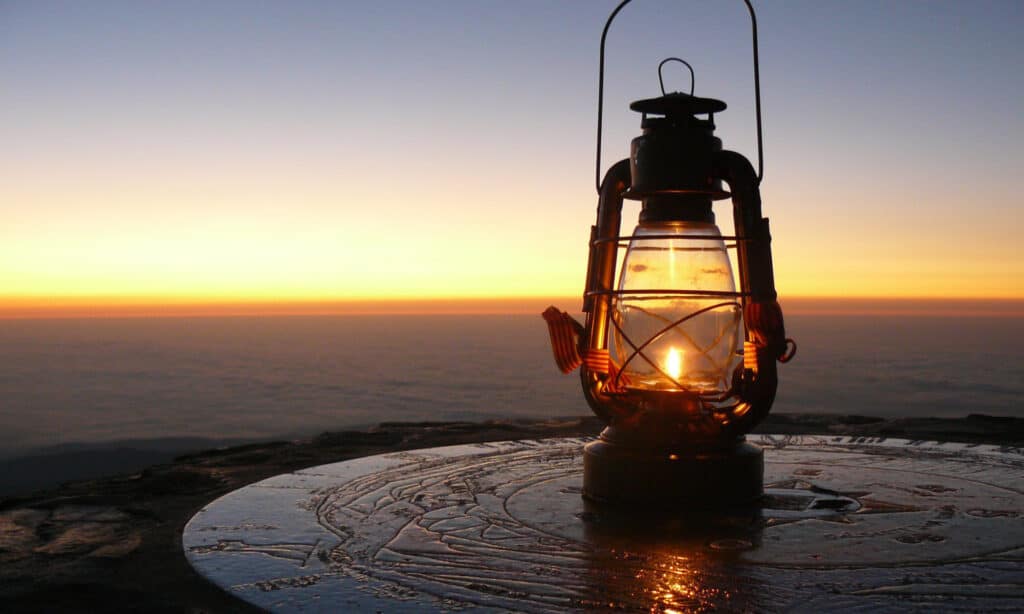
The Flame of Canigó
Of the three symbols, though, fire is, without a doubt, the most important. It has been used in Sant Joan celebrations here in Catalunya since at least the 12th century. One increasingly rooted and popular ritual is that of the Flame of Canigó. It was begun in 1955 by a certain Francesc Pujades, from just over the border in Catalogne-Nord (or French Catalunya), and its intention was to evoke the common identity of Catalan-speaking lands.
A Pyrenean mountain peak called the Canigó had inspired a certain Mosén Jacinto Verdaguer to write one of the most important epic poems in Catalan literature back in 1886. In case you’re tempted to have a go at reading it, “Canigó” is an epic poem consisting of over four thousand verses in twelve cantos, plus an epilogue! It’s probably enough to know that it is about the birth of the Catalan nation in the Pyrenean valleys during the Carolingian era.
As Verdaguer was inspired by the mountain, so Sr. Pujades was inspired by the poem. He had the idea of lighting the bonfire of Sant Joan at the top of the mythical Canigó mountain near his village and, from there, spreading the flame to Catalan towns and villages. That was in the mid-1950s, and the custom grew in popularity with each passing year. The flame crossed the Pyrenees for the first time in 1966, arriving in Vic, and, even despite the Franco dictatorship, the tradition spread throughout all Catalan-speaking territories as a symbol of Catalan culture.
Nowadays, the Flame of Canigó never goes out but is kept burning all year long in the Castellet de Perpignan (or Perpinyà in Catalan). On the Sunday before Sant Joan (or St. Jean in French), different delegations carry bundles of wood in the name of their villages to the summit.
Then, on the evening of 22 June every year, a group of volunteers leaves Perpignan with the flame, climbs the Canigó, and lights the fire around a cross at the summit, thus renewing its energy. The fire is tended by volunteers overnight, and in the morning, the flame is distributed among those present, who then take to the roads to distribute it to light the Sant Joan bonfires of about 400 Catalan towns on both sides of the border, as well as a few in neighbouring Aragón and Valencia.
The Flame of Canigó is spread by any means of transport possible and reaches its many destinations thanks to the efforts of local groups. Each town or city organises the reception of the Flame with its own events, but at each destination, before lighting the bonfires, a common message is read out to remember the meaning of the ritual—not the poem in its entirety, though, or the party would never get started!
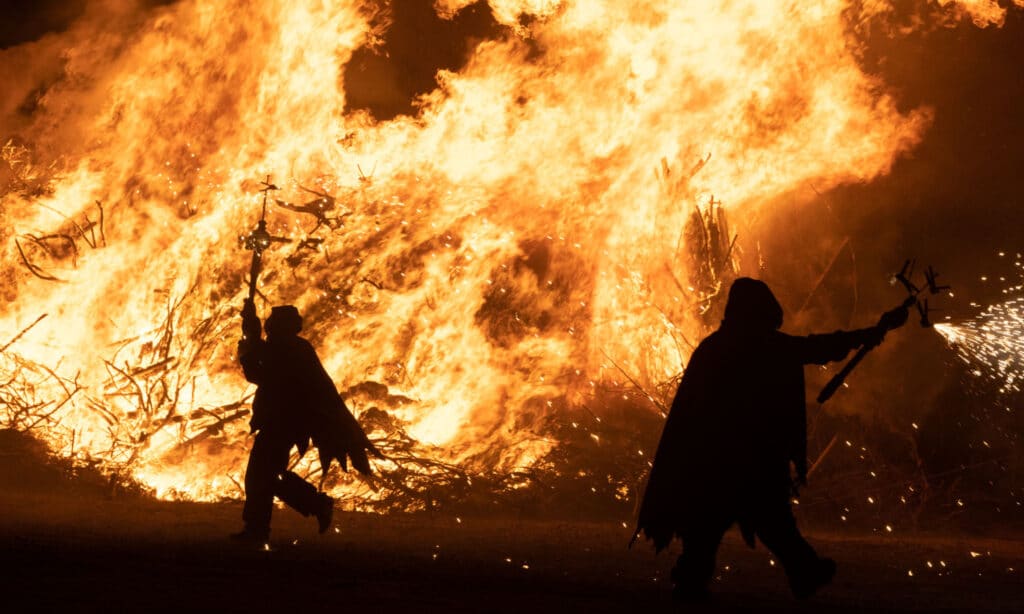
Bonfires
So, fire is definitely the principal element of the Sant Joan festivities. With the sun, which was a symbol of fertility and wealth, reaching its highest point at the solstice and then beginning its annual decline, the belief was that the lighting of bonfires would help replenish its strength. Fire also represented purification and renewed energy, and was believed in times past to ward off evil spirits that were at large on solstice and equinox nights when the veil between this world and the spirit realm was at its thinnest.
As well as the bonfires, fireworks, firecrackers and bangers, are very common and kids (of all ages – and we mean all ages!) will start throwing these (sometimes quite annoyingly) in the streets of Catalan towns long before the sun goes down. The loud bangs were originally meant to scare away any witches or goblins. We’re pretty sure all the demons are gone by now, but the bangers remain!
The lighting of the bonfires is traditionally done throughout Catalunya on the night of the 23rd, St John’s Eve, or La Revetlla de Sant Joan, and that night is known in Catalan as the “Nit de Foc”, or “Night of Fire”. Festivities typically kick off around dusk, although people may gather even earlier in bars or restaurants to line their stomachs for the night ahead. Others gather on beaches and sit around a fire playing music, dancing and drinking beer (or whatever!), usually till dawn, and, depending on where you are, there may even be a proper fireworks display.
Sant Joan is also a big event in the traditionally Catalan-speaking regions of Valencia (especially Alicante) and the Baleares (especially Menorca), as well as a bit further afield in Galicia, where bonfires also play a huge role in the celebrations of San Xoán, as he’s called in Gallego.
Some former Spanish colonies in Latin America still mark the occasion, as do many Scandinavian and Nordic countries, particularly Sweden, where it’s probably the biggest fiesta of the year. Until relatively recently in Ireland, St. John’s Eve was known as Bonfire Night, especially in western counties. It was also customary to bathe in the sea, just like here in Catalunya, but this tradition has largely faded in recent decades. Maybe it was because the Atlantic sea was a bit too cold, but that’s definitely not an issue here on the Costa Brava!
Fireworks during Sant Joan Costa Brava
The Festa de Sant Joan (also known as the Verbena) is always celebrated from the night of 23 June into the early hours of the 24th. However, not all towns hold their fireworks displays on the same evening. It’s always best to check with your local municipality, but the following towns have confirmed official events for the night of the 23rd:
- Viladomat
- Torroella de Montgrí
- Port de la Selva
- Santa Cristina d’Aro
- Pals
- Castell d’Aro – Platja d’Aro – S’Agaró (includes an official fireworks display)
In L’Estartit, the Verbena de Sant Joan is part of the Ítaca Festival and runs from 20 to 23 June, with fireworks and concerts on the final night. The port town of Palamós kicks off its annual Festa Major on the night of 23 June, continuing through to 26 June, with fireworks marking the start. Most other Costa Brava towns celebrate their festes majors in July or August.
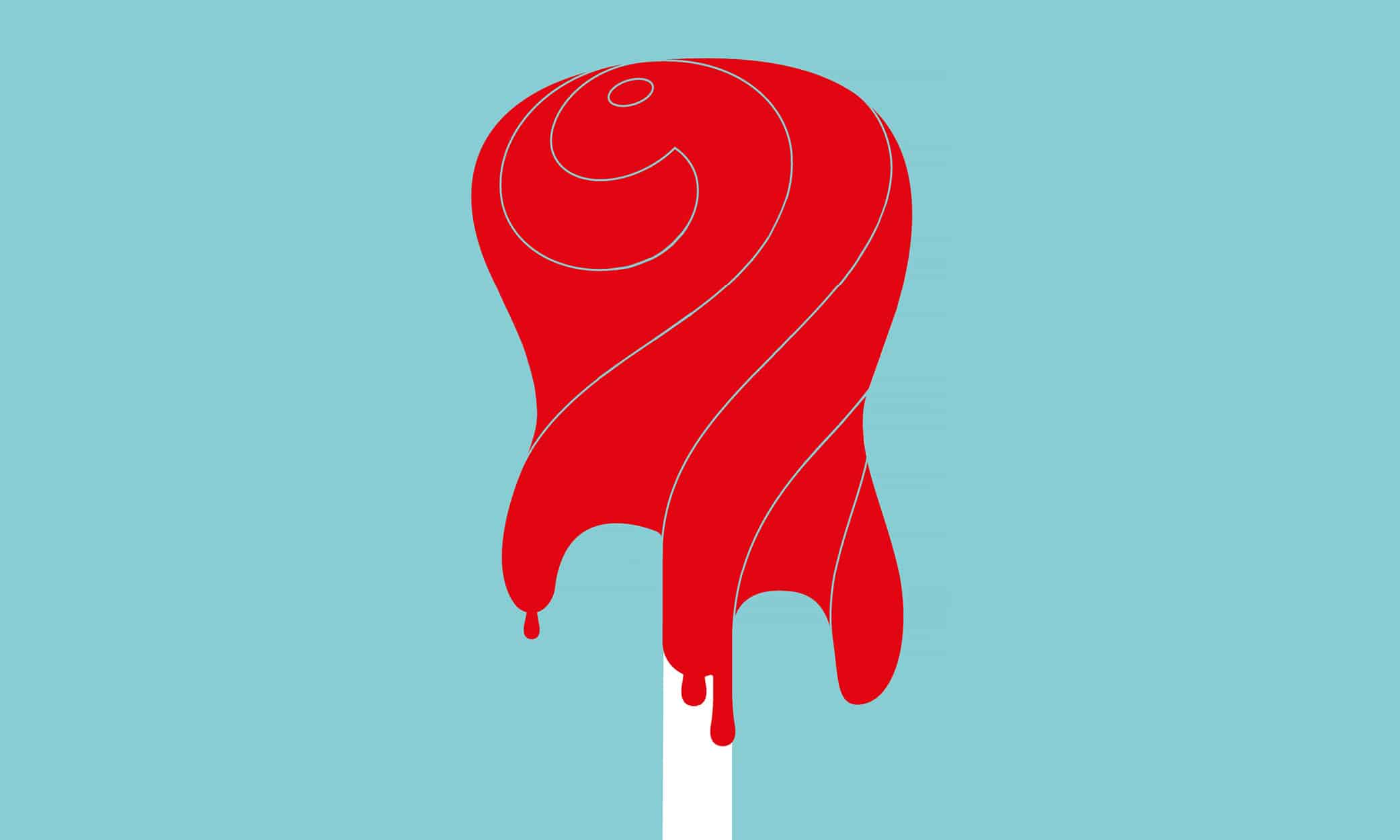
Festa Major, Palamós
Fairground attractions and a craft market are set up around 20 June, ahead of Sant Joan. The official start of the Festa Major is marked by the arrival of the Flame of Canigó at the Parc del Convent dels Agustins at 20:00 on 23 June.
Down at the beach, barracas, temporary bars with live music stages, come to life each night from 23 to 26 June, with concerts starting around 23:00.
The Festa Major 2025 runs from 21 to 29 June, with the main celebrations centred around Sant Joan. The festivities conclude with the traditional fireworks display over Platja Gran at 23:30 on Thursday, 26 June.

Pets
Most of us humans NjOY! a good fireworks show, but the same cannot be said for many of our pets. The loud bangs and flashes of light can cause anxiety, which may lead to unwanted behaviours, such as urinating where they’re not supposed to, and even affect their overall health in more serious cases.
Some animals seem completely unaffected by fireworks, while others are absolutely terrified. It may be possible to desensitise your pet to loud noises like fireworks through training, but if you’re reading this in the run-up to Sant Joan 2025, it might be a bit too late for that this year! You could ask your vet in Catalunya about sedatives, but there are also simpler approaches that may work just as well.
The most obvious is to close doors and windows and draw the curtains, especially if your pet will be home alone during the display. Don’t forget small windows that cats, in particular, might try to escape through if frightened. Playing music can help block out some of the sound, with classical or bass-heavy music often recommended. For dogs, a good long walk in the afternoon can help, as a tired dog may be less reactive. And having a few favourite treats on hand probably won’t hurt either.
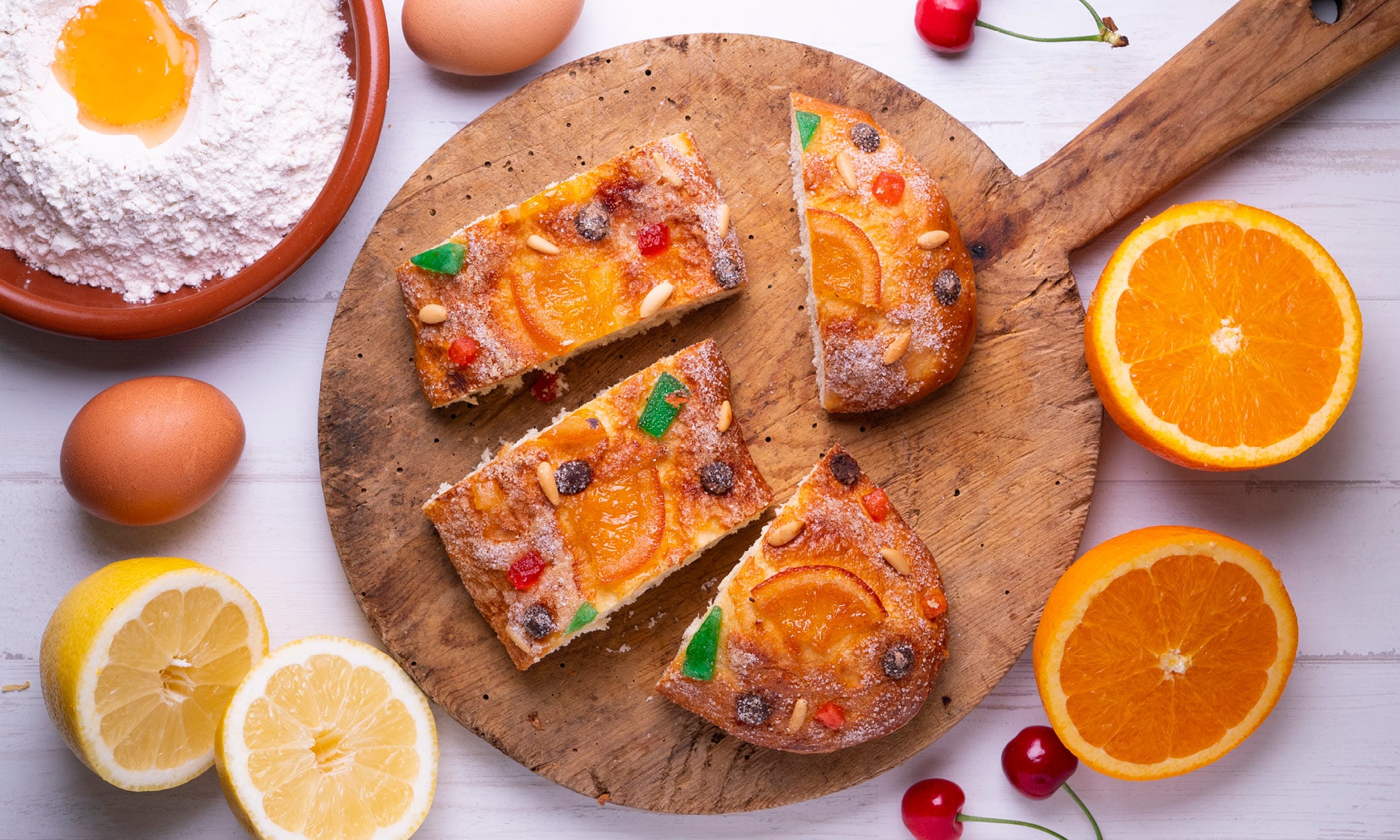
Coca de Sant Joan
As with just about every other festival or occasion in Catalunya, there’s a traditional dish to go along with it. In the case of Sant Joan, it’s a (usually) sweet one, called Coca de Sant Joan. “Coca” is a Catalan word that means “cake” or, probably more accurately, “tart” in English. This large, flat pastry is typically very sweet and made with candied fruits, marzipan and cream. Traditionally, the cake would have been served with dessert wine, although cava is probably more common nowadays. An estimated 1.5 million cocas are sold each year during Sant Joan.
If you can’t handle all that sweetness, there are also savoury versions called “Coca de Llardons” (or “chicharrones”) with bacon and pine nuts, or “Coca de Recapte” with vegetables (such as peppers and aubergines), cheese, and sausage or fish (typically sardines, tuna or anchovies) that are not uncommon. The real purists say a true Coca de Sant Joan should be rectangular and exactly twice as long as it is wide, although once upon a time, cocas were round with a hole in the middle to represent the sun. The story goes that those sun-worshipping cocas were seen as “too pagan” and so changed to rectangular. We’re not sure if that’s true, but it’s kinda funny if it is!







